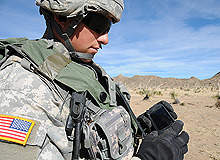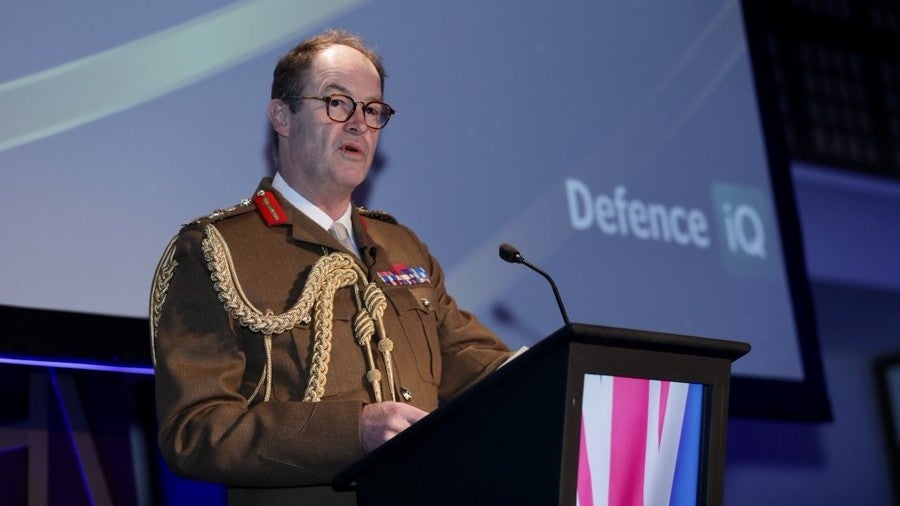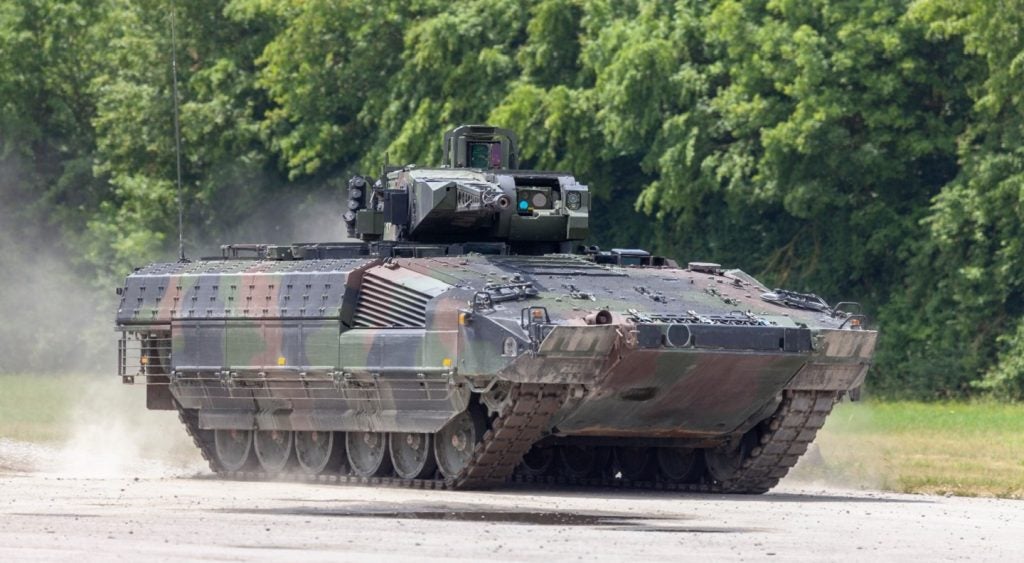
A US Army company patrolling in Afghanistan picks up an individual acting suspiciously. With no evidence of wrongdoing and no identifying information, they are about to let him go, but they decide to check first with a neighbouring company.
Using a standard smartphone, they send over a photo and some identifying information.
He is known to the second company, so his captors detain him, rendering inoperative a high-value regional target.
This incident is one example of a series of informal evaluations into how soldiers could use smartphones, along with other mobile digital devices, on the battlefield and at forward operating bases and garrisons.
The trials are part of an effort called connecting soldiers to digital applications (CSDA) lead by the US Army Training and Doctrine Command (TRADOC).
See Also:
It has been led for 15 months by Michael McCarthy, director of operations at TRADOC’s Brigade Modernisation Command at Fort Bliss, Texas.
How well do you really know your competitors?
Access the most comprehensive Company Profiles on the market, powered by GlobalData. Save hours of research. Gain competitive edge.

Thank you!
Your download email will arrive shortly
Not ready to buy yet? Download a free sample
We are confident about the unique quality of our Company Profiles. However, we want you to make the most beneficial decision for your business, so we offer a free sample that you can download by submitting the below form
By GlobalDataTransforming training techniques
Beyond identifying suitable hardware and applications (apps), CSDA aims to investigate supporting infrastructure, such as power sources when away from bases, gloves that can operate touchscreens as effectively as bare skin, and portable phone masts. The first goal was to contribute to a persistent learning environment to support soldiers’ career development using commercially available software.
McCarthy explains that training apps delivered unforeseen results. “The eight pilot projects included some to train newly enlisted soldiers through to commissioned officers” says McCarthy.
“We saw about a 10% increase in their grade point averages, meaning we’re sending soldiers to units better trained and ready to focus on training for higher level tasks.”
It became obvious there was scope for apps with other functions, which McCarthy’s team sources from small, private companies, trained officers working in the computer science function and from among the soldiers who use the apps.
One young Private involved in the trials had previously worked in software and wrote a series of apps for use in the field, including some written while on a six-week exercise.
“His company commander bet him a soda one evening that he couldn’t write an app to take the feed of the mast-mounted security camera outside the company operations centre and push it out to all the smartphones in the company,” said McCarthy. “Eight hours and two Monster drinks later he had it.”
So impressed was the Vice Chief of Staff of the Army with this and the other apps the Private developed, he gave him a spot promotion to Corporal.
Economics and infrastructure
One early outing for the phones came in May 2010 as part of an exercise carried out alongside the UK Army known as Omni Fusion. Four soldiers spread across different bases were issued with smart phones with just three applications.
Without any training, within two hours the soldiers had worked out how to track each other’s movements using their phones.
“We have a very expensive system called Blue Forcer Tracker that tracks vehicles, but it doesn’t track individual soldiers,” McCarthy comments. “We spent millions of dollars developing and fielding it, and four average soldiers did exactly the same thing with $200 smartphones.”
So successful was that experiment, army leadership asked the team to accelerate operational testing. An exercise using 200 phones followed in June 2010 and another in December, with the number of apps growing to 85.
Testing the use of mobile phones on US soil where coverage is widespread and reliable is one thing, but on the battlefield they would be used in a hostile environment with limited infrastructure, possibly run by a hostile state.
Addressing the transport layer became the theme of network integration evaluation (NIE), a series of semi-annual evaluations designed to establish a baseline and then rapidly build and mature the army’s tactical network.
“We know we need to be able to provide that cellular capability and to establish and control our own cellular infrastructure,” says McCarthy. “We have seen some phenomenal solutions out of industry that are much cheaper than if we tried to develop our own capability.”
The rate of change in mobile phone technology is so rapid that the US Army has had to investigate unusual acquisition methods.
Rather than decide on a specific model from an individual manufacturer like much of the army’s equipment, CSDA aims to be entirely system and operating system (OS) agnostic.
“If we lock ourselves into one phone or operating system, it makes it much easier for an enemy who is targeting that system to focus their attentions on one phone or one operating system,” explains McCarthy. “It also gives us the flexibility every time we’re ordering a new batch to ensure we’re buying latest and best technology and OS.”
Physical and software security
Anyone who has every dropped their phone on the pavement might fear for the fragility of off-the-shelf phones in a military environment, plus the added risk of one falling into enemy hands and revealing sensitive data. However, the team saw no need to use specially ruggedised equipment.
“One of the things we’ve discovered was that smart phones are a lot tougher than people give them credit for,” says McCarthy. “It doesn’t make sense to spend $2500 hardening a $200 phone. Our concept is if they wear out, break or get lost, we can replace them at a much lower cost.”
The phones are fitted with a $10 standard silicon cover and the project is looking at the best way for soldiers to carry them safely about their person.
So far only two have been broken – one by an officer who dropped it on his office floor, the other was left in an armoured vest and run over by a four-ton mine resistant vehicle.
For the information assurance side of the project, the team is working with the National Security Agency and NETCOM, the US Defence Information Systems Agency, to establish the policies and procedures to ensure users of the phones and the information held on them are safeguarded. Solutions include biometric phone access, having the phones securely access data from a cloud rather than storing any locally, and enabling the phone to be wiped remotely if it falls into the wrong hands.
Enthusiasm for apps
Smartphones have proven universally popular with soldiers who have used the devices in their civilian lives and can readily pick up how to use new apps.
The trials enabled feedback to be captured far earlier in the process than standard programmes, with the introduction of informal blogging feedback in addition to the formal process.
“One of the fuel technologies we were looking at started to exhibit problems early on in the exercise,” says McCarthy. “Traditionally we wouldn’t have found that out until the after action review. Getting that informal feedback meant we could contact the manufacturer and replace the devices within 48 hours.”
The feedback also showed that one of the most popular apps with the soldiers was an augmented reality system for situational awareness, called Soldier Eye, which superimposes images of friendly and known enemy locations over a camera image of the locality.
“It uses Google Maps to tell you within a metre where you’re at,” says McCarthy. “A little icon pops up on the screen and gives you the direction and distance from your location to the objective.”
The introduction of smartphones to the US Army is not yet a formal programme so there is no firm date on when they will be deployed on the battlefield, but McCarthy expects to see some units carrying them within the year.
“We might see a platoon leader with a smartphone and an iPad or similar device,” says McCarthy. “The average rifleman may carry a smartphone.”
What is certain is that soldiers are very keen to get their hands on smartphones. “I continually get requests from different organisations in theatre that want to know how they can be the first one to get them when the Army decides to start issuing them,” says McCarthy.
Cheap to acquire and quick and easy to develop apps for, it will not be long before other armed forces answer the call for smartphones.







